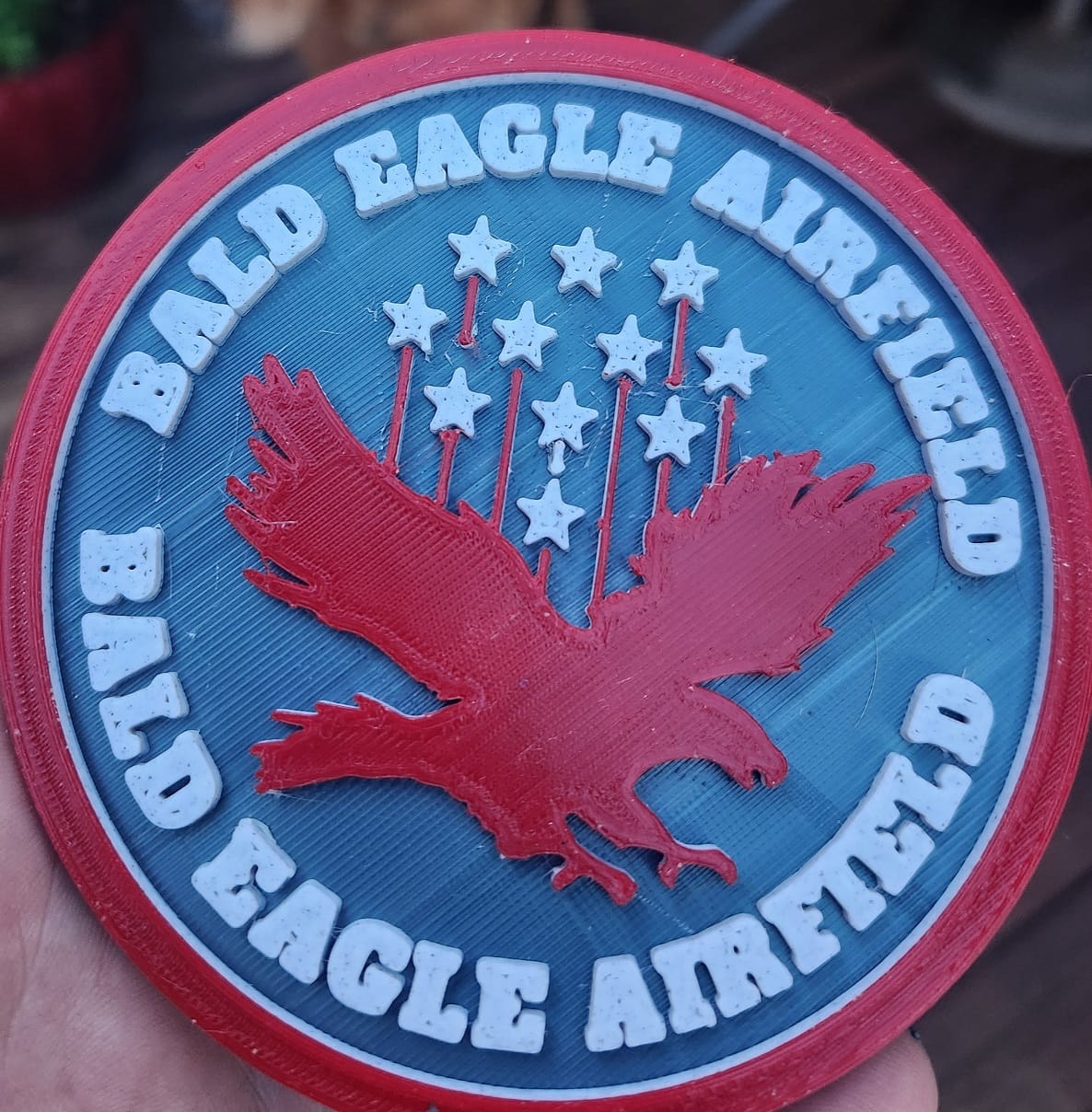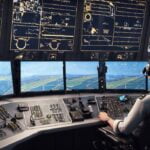Exploring Cleetus McFarland’s Aviation Paradise
Bald Eagle Airfield (67FL), formerly Myakka Head Airstrip, is a privately owned, public-use airport nestled in the heart of Zolfo Springs, Florida. Popularized by YouTuber Cleetus McFarland, this 50-acre airfield offers a unique aviation experience. With its meticulously maintained grass runway, considered one of Florida’s finest, 67FL harkens back to a simpler era of flight. This guide provides a comprehensive overview of Bald Eagle Airfield, its history, facilities, and what makes it a must-visit for aviation enthusiasts and pilots alike.
A Haven for Aviators
Imagine landing on a pristine grass strip, surrounded by the sights and sounds of vintage aircraft. This is the reality at Bald Eagle Airfield. It’s a place where the passion for flight is palpable, a community where pilots and enthusiasts gather to share stories, swap tips, and celebrate the freedom of the skies. The airfield’s rustic charm and laid-back atmosphere provide a welcome escape from the hustle and bustle of commercial aviation. You’ll likely find yourself captivated by the collection of classic planes, each one a testament to the rich history of aviation. This living museum offers a glimpse into the past, reminding visitors of the ingenuity and daring that propelled flight forward.
Cleetus McFarland’s Impact
The airfield’s recent surge in popularity can probably be attributed, in part, to its association with Cleetus McFarland. A well-known automotive and aviation enthusiast, McFarland has introduced Bald Eagle Airfield to a new generation through his online videos and events. His presence has not only put 67FL on the map but has also fostered a renewed interest in grassroots aviation. McFarland’s videos often showcase the unique appeal of the airfield, from its challenging grass runway to the camaraderie of the aviation community that calls it home.
What to Expect at Bald Eagle Airfield
Whether you’re a seasoned pilot or simply curious about aviation, Bald Eagle Airfield offers something special. For pilots, the grass runway presents a unique and rewarding challenge, demanding precise flying skills. It’s a chance to disconnect from modern technology and experience the pure essence of flight. Those who aren’t pilots will appreciate the opportunity to explore the surrounding landscapes of Zolfo Springs and Myakka City. The airfield serves as a gateway to exploring the natural beauty of Florida. From scenic landscapes to hidden local gems, there’s something for everyone to discover. You might even consider exploring the history and cultural significance of beards among native peoples. If you’ve ever wondered can native americans grow beards, this article will provide valuable insights.
Pinpointing Bald Eagle Airfield: Location and Navigation
Finding Your Way to 67FL
So, you’re ready to experience Bald Eagle Airfield? Here’s the essential information you’ll need to find this aviation gem. Located in Zolfo Springs, Florida, Bald Eagle Airfield (67FL) is easily accessible to pilots and visitors alike. For precise navigation, enter these coordinates into your GPS: 27°27’20.0000″N, 82°06’18.0000″W. Pilots should note the elevation of approximately 80 feet MSL and the magnetic variation of approximately 6.3° W (as of October 2024). These details are crucial for safe and accurate flight planning. The airfield sits on 50 acres, offering ample space for aircraft operations and gatherings.
From Myakka Head to Bald Eagle: A Transformation
Originally founded by Marvin Taylor approximately 40 years ago, the airfield initially went by the name Myakka Head Airstrip. The transformation to Bald Eagle Airfield reflects a renewed focus on community and the spirit of aviation. While the name has changed, the core values remain the same: a love for flight and a commitment to preserving the history and traditions of aviation.
The Bald Eagle Community
What truly sets Bald Eagle Airfield apart is its vibrant community. It’s a place where pilots, enthusiasts, and even casual observers connect over their shared passion for aviation. You’ll likely encounter lively conversations about flying adventures, aircraft technology, and the latest happenings in the world of flight. This sense of community is fostered by the airfield’s welcoming atmosphere, encouraging interaction and shared experiences.
Bald Eagle Airfield: Key Features and Information
Quick Facts about 67FL
| Feature | Description |
|---|---|
| Official Name | Bald Eagle Airfield – Myakka Head Airport |
| FAA Identifier | 67FL |
| Location | Zolfo Springs, Florida |
| Coordinates | 27°27’20.0000″N, 82°06’18.0000″W |
| Elevation | Approximately 80 feet MSL (Mean Sea Level) |
| Magnetic Variation | Approximately 6.3° W (October 2024) |
| Size | 50 acres |
| Runway Surface | Grass (maintained in excellent condition) |
| Founder | Marvin Taylor |
| Current Association | Cleetus McFarland |
Planning Your Visit
While the information provided here aims to be comprehensive, it’s important to remember that conditions can change. Regulations, facilities, and other details can be updated, so it’s always advisable to consult official aviation sources like AirNav (airnav.com/airport/67FL) for the most current information, including NOTAMs, frequencies, and other crucial data. This ensures a safe and enjoyable experience at Bald Eagle Airfield.
The Bald Eagle Courtship Ritual: A Dance in the Sky
Aerial Acrobatics and Lifelong Bonds
The bald eagle, a symbol of strength and freedom, engages in a courtship ritual as captivating as its soaring flight. This ritual, a complex series of aerial displays, is more than just a spectacle; it’s a crucial test of compatibility, strength, and trust, essential for forming lifelong pair bonds and ensuring the survival of their offspring.
The Dramatic Death Spiral
Perhaps the most dramatic element of the courtship ritual is the “death spiral” (also known as the cartwheel courtship flight). Two eagles lock talons mid-air and then begin a dizzying descent, spiraling towards the earth before breaking apart just moments before impact. This breathtaking display may seem reckless, but it serves a critical purpose. It likely allows the eagles to assess each other’s strength, agility, and coordination under pressure. This daring act builds trust, showing a willingness to be vulnerable with a potential mate.
Beyond the Spiral: Other Courtship Behaviors
While the “death spiral” is undoubtedly impressive, the courtship ritual involves other important behaviors. “Sky dancing” is a series of graceful aerial maneuvers, with eagles chasing, swooping, and diving through the air. This dynamic display likely showcases fitness and strengthens the pair bond. Mutual feeding, where eagles share food in flight, further reinforces their connection and demonstrates their ability to provide for each other and their future offspring.
The Significance of the Ritual
These courtship behaviors, taken together, build a strong foundation for a lifelong partnership. They help eagles assess compatibility, solidify their bond, and prepare for the challenges of raising a family. While much is known about these rituals, research continues to explore their nuances. Some experts believe variations within the ritual may reveal aspects of pair bond strength or predict future breeding success.
How High Do Bald Eagles Fly? Exploring the Limits
Altitude and Adaptation
Bald eagles, renowned for their majestic flight, often inspire the question: just how high can they soar? The answer, like many aspects of the natural world, is multifaceted. Several factors influence a bald eagle’s flight altitude, including the specific activity (hunting, migrating, soaring), weather conditions, and individual variations.
Typical and Maximum Altitudes
For everyday activities like hunting and navigating terrain, bald eagles typically cruise at altitudes between 500 and 1,000 feet. This range likely provides optimal visibility for spotting prey and efficient travel without excessive energy expenditure. However, when soaring over obstacles or taking advantage of thermal updrafts, bald eagles have been documented reaching impressive heights of up to 10,000 feet.
Comparing Eagle Species
Within the eagle family, there’s notable variation in flight altitude. While bald eagles comfortably reach 10,000 feet, golden eagles also achieve similar heights. The steppe eagle, however, stands out with documented observations at a staggering 16,000 feet. These variations highlight the remarkable adaptability within the eagle family, reflecting different environmental pressures and hunting strategies.
Factors Influencing Flight
Several elements contribute to an eagle’s ability to achieve these impressive altitudes. Wing size plays a role, with larger wings generating more lift. Air density, decreasing with altitude, poses challenges requiring stronger wingbeats and efficient oxygen uptake. Weather conditions, particularly thermal updrafts, are essential, acting like natural elevators that conserve energy during high-altitude flights. Ongoing research continues to refine our understanding of eagle flight, and further discoveries are always possible. Even seemingly simple questions, like can native americans grow beards, reveal complex interactions between genetics, environment, and cultural practices, reminding us of the ever-evolving nature of scientific inquiry.
- Unlocking 2-Letter Words with U: The Definitive Guide - April 4, 2025
- Unlock Words with the Letters THREE: Top Unscramble Tools 2025 - April 4, 2025
- Master Scrabble: X & Z Words for High Scores - April 4, 2025

















1 thought on “Cleetus McFarland’s Bald Eagle Airfield (67FL): A Florida Aviation Paradise”
Comments are closed.